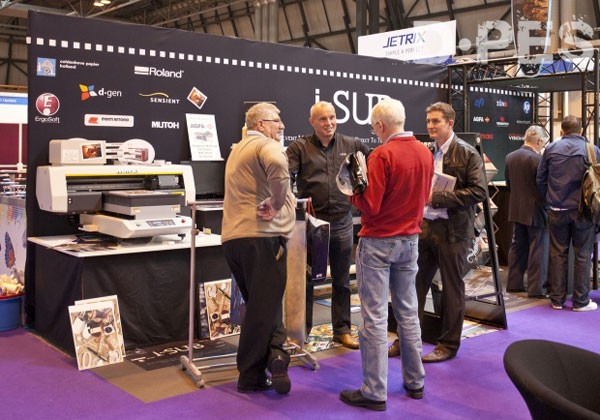It's that time of year again when the NEC opens its doors to the industry for Sign and Digital UK, the only UK opportunity where all that's new is put on display along with tempting deals to lure visitors into investing. FESPA Digital has already been responsible this year for a number of product launches, including the new machines from Mutoh, Mimaki, Agfa, Epson and Fujifilm, and these are now set to make their first UK appearance.
Other manufacturers, such as Roland, might not have anything new to demonstrate and for these there's the opportunity to work with others at presenting solutions rather than just engines. Joining forces at the exhibition provides more of a working environment for potential customers, and Roland is a good case in point as it's teaming together with Solent Sewing and Welding, whose Miller Weldmaster will be welding jobs printed on Soyang materials and cut on a Kongsberg table.

Sign and Digital UK is good for networking as well as being an industry showcase
First off the blocks in terms of new machines is Mutoh with its 1.6m ValueJet 1638, determined to confirm to the market that eco-solvent platforms still have plenty of life left in them. From the outside this might look just like other systems from this manufacturer but it's upped the speed considerably to more than 50sq m/hr and added some nice touches, such as options for 220ml and 440ml cartridges or with its high-capacity ink adapter, which supports one-litre bags. With colour accuracy becoming ever more crucial, the addition of Mutoh's SpectroVue VM-10 spectrophotometer now means that process control can become a part of the overall workflow.
Epson doesn't like to use the word solvent when describing the ink used in its recently launched low-cost 1.6m SureColor SC-S30600, which I got to know well at Print Shop Live at FESPA Digital. This new machine features UltraChrome GS2 nickel-free inks and latest generation TFP print-heads and, perhaps surprisingly, produces remarkably good output even though it's only a four-colour engine.
DPI is also bringing something new to Sign and Digital UK with InkTec's new Jetrix 2030 FRK which has a fixed flat-bed, optional roll-to-roll printing, white ink and an in-built primer to broaden the range of materials that can be printed. The :Anapurna M2540 FB is another newcomer to the flat-bed ranks and this is joined by Agfa's :Anapurna M2050 which is also making its first UK appearance. Both of these incorporate white ink which is now becoming increasingly commonplace across all budgets of UV-curable machines.
I wouldn't be doing my job properly if I failed to mention Mimaki's arrival on the latex scene with the JV400-130LX and JV400-160LX, which created a stir at FESPA Digital. Under the stewardship of UK distributor Hybrid Services at Sign and Digital UK, this duo of printers has new long-life print-heads with a four-picolitre droplet size and variable dot technology, along with six colours and a white ink. Don't ignore Mimaki's SUV ink development which, as its name suggests, combines solvent-based flexibility with UV-curable durability with the intention of bring better adhesion.
Many have stressed this year that production and MIS software is beginning to become more important to the display industry. Corel has just released its CorelDraw Graphics Suite X6, a series of programs which has retained popularity amongst Windows users and provides an alternative to several of the options within Adobe CS. With the apparent increase in Macintosh users, perhaps it's a shame that Corel has stayed on the Microsoft path and not considered porting this for Apple.
MIS solutions are also receiving increased coverage this year with long-term exhibitor Clarity Software featuring its e-marketing tool which can be used as a standalone product. Others tackling the administrative side of production include Shuttleworth and Optimus with Dash, designed to move MIS away from litho and cater for the idiosyncrasies of digital and screen-printing.
From a technology standpoint, the changes we're now seeing are mainly with ink formulations, much as expected. It's four years since HP introduced its first latex machines, and variations since have been more subtle with improvements continuing to drive better results and nicer working conditions.
Sign and Digital UK will show that print engines are changing in shape and size, and materials are getting greener and more versatile. The exhibition will also confirm that software is becoming more of a driving force and finishing tables are becoming ever more essential. This event also continues to be a key place for valuable networking as well as a showcase for today's technologies.